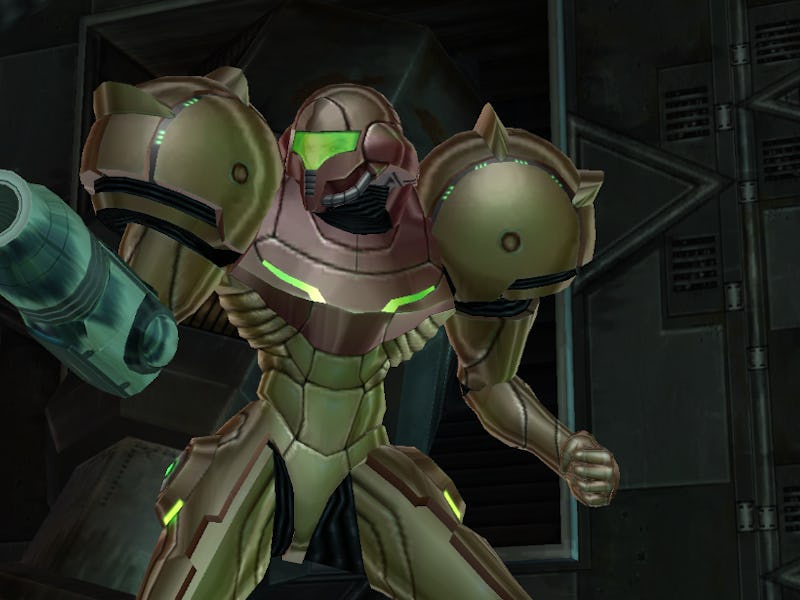Before 'No Man's Sky', There Was 'Metroid Prime'
Virtual space exploration was pioneered by Nintendo's best leading woman.

Can there be too much of a good thing? Yes, since No Man’s Sky is a perfect example of too many riches. Why spend all this time on a single planet when I have a never-ending buffet in front of me? But 14 years ago, and 30 years this month into Samus Aran’s debut, players were tasked with truly exploring a single planet in Metroid Prime, and it’s almost antithetical to No Man’s Sky.
Whereas No Man’s Sky gives the player 18 quintillion planets to never visit, Metroid Prime strands players on a single planet to explore more intimately than most people have their backyards. While the possibilities in visiting a near-endless amount of planets is mouthwatering, I’m finding myself unable to engage with any one planet in a particularly meaningful way. Either the planet is so gorgeous I name it a cherished moniker before jetting off with a lifetime of memories; or the planet is terrible and I leave forever hoping to never set foot again on Garbage Planet X.
Then there’s Metroid Prime’s Tallon IV.
Metroid Prime
Tallon IV is a multi-climate, alien planet that is as beautiful as it is terrifying. It has six micro-systems, each with its own fauna and biological organisms. I spent 20 hours in every corridor, hidden passage, mountainous cavern, and underwater abyss the planet had to offer. Tallon IV was this alien wonderland that encouraged serious exploration. There was no triumph in encountering new species or landmarks. Only the accumulation of knowledge that encouraged further study and exploration into this single planetary mass.
Developer Retro Studios describes the game as a “First-Person Adventure(er)” and they’re right. Part archaeological excavation, part anthropological expedition, Metroid Prime was the first 3D outing for Nintendo’s leading badass: Samus Aran. Retro Studios fully rendered a world that featured heavy backtracking, open-ended exploration, and maze-like structures.
No Man's Sky
Metroid Prime was a drastic change for the series that, until then, had produced a series of 2D, side-scrolling adventures. With an expansive new world to explore, Retro Studios went the further, courageous step of creating a game that was frankly inhospitable to timid explorers. If the idea of getting lost struck fear into your hearts, too bad, because there was no escape from Tallon IV.
From the opening moments of the game, Metroid Prime encouraged players to travel physically into the planet. Corridors burrowed toward the core as players were tasked with hunting a bounty that escaped to Tallon IV. Burrowing even deeper into the alien world revealed monuments of ancient civilizations, trace evidence of extinct peoples, and the discovery of ancient religions — all of which came together to create a truly atmospheric, space-archaeology adventure.
Meanwhile, there’s something Buck Rogers-esque in the way No Man’s Sky treats space exploration. There are objective bits of information like the value of certain resources excavated on one of nigh-infinite planets. But when encountering an alien creature for example, the protagonist’s gung-ho spirit awakens and assumptions are made about the alien’s motives, emotions, or actions based on non-quantifiable signifiers like the way they “seem disgruntled,” or “impatient.” These observations are not my own and it defeats parts of the exploratory nature of the game.
No Man's Sky
Metroid Prime on the other hand, responds to these anthropological excursions with silence. Like No Man’s Sky, there are objective bits of information to be mined. The history of certain archaeological finds for example are presented to the player through a similar scanner feature found in both games. But the bulk of the game leaves the player to their own devices when ascertaining the meaning of anything. Adventure is not without its difficulties, and Metroid Prime refuses to hold your hands as you try and solve the mystery of an entire planet and the civilization that previously inhabited it.
No Man’s Sky is a surface game. Not to be confused with “superficial”, No Man’s Sky invites a cursory level of exploration. “What plants are these,” “can I fuel my ship with these,” “what are those animals,” “I’ll name it the Matt Kim Rhino.” It’s the sun’s out, guns out philosophy to Metroid Prime’s more methodical process.
It all comes back to the idea of what an “exploration” means to you. If, like the old colonizers, the goal is to discover as much of the mapped universe and put your name on it, then No Man’s Sky will keep you busy for a good, long while. But if the idea of exploring an entire civilization that exists outside your known comprehension, and learning all there is about it without claiming it for yourself, then Metroid Prime deserves your attention.
Both games should be lauded for taking space exploration seriously in the age of virtual simulations, but they also make for a fascinating study in contrast.